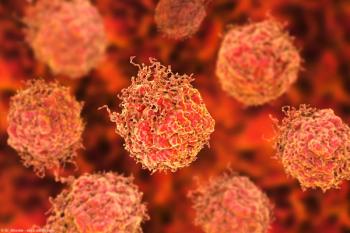
Pelvic pain shows range of effects on sexual function
In one study, 85% of the CP/CPPS patients had decreased frequency of sexual contact because of their pain, 67% said it interfered with or ended relationships, and 43% said it inhibited forming new relationships.
Baltimore-While it seems obvious that pelvic pain conditions can affect sexual function, very little is known about the interaction.
Only four to six mainly descriptive studies with fewer than 300 patients focus on sexual outcomes in chronic pelvic pain patients, according to Julia R. Heiman, PhD, speaking here at the NIDDK-sponsored Chronic Pelvic Pain/Chronic Prostatitis Scientific Workshop. Dr. Heiman, who is the director of the Kinsey Institute at Indiana University, Bloomington, reviewed the published studies as well as studies under way that are illuminating the picture of patients with chronic prostatitis/chronic pelvic pain syndrome (CP/CPPS).
Although it was more psychosocially than medically oriented, a 1999 study described the prevalence of sexual pain among women only (JAMA 1999; 281:537-44). From 8% to 21% experienced pain during sex, with the highest rate occurring in women ages 18 to 29 years and the lowest, 8%, in women ages 50 to 59 years. Interestingly, the risk factors for experiencing pain included urinary tract symptoms.
The women with this condition had more "catastrophizing" thoughts regarding intercourse pain, but not about unrelated pain, which led the authors to conclude that vulvar vestibulitis is likely a specific pathologic process in the vestibular region superimposed on a systemic hypersensitivity to pain (Pain 2002; 96:163-75).
Effect on sexuality in men
Data on pelvic pain in men are much more limited, Dr. Heiman noted. To help "locate sexuality in the larger context of being a human being," she described a study showing that the impact of CP/CPPS was similar to that of myocardial infarction, angina, or Crohn's disease (J Urol 1996; 155:965-8).
Findings from an early study on sexuality in CP/CPPS patients (Clin J Pain 1994; 10:218-26) are "a signal that it is affecting interpersonal relationships," noted Dr. Heiman. Compared with back pain patients, CP/CPPS patients were less likely to be married (30% vs. 80%). Nearly half (45%) reported pain during or after intercourse and fears of infecting sexual partners, and 60% scored in the depressed range of the Minnesota Multiphasic Personality Inventory.
Another early study characterized CP/CPPS pain and its effect on sexual relationships. Pain was perineal in 74%, suprapubic in 60%, rectal in 56%, testicular in 54%, in the back in 40%, and penile in 32% of CP/CPPS patients (J Psychosom Res 1996; 41:313-25). The men averaged 3.28 pain sites, with a mean severity of 6.54 on a 10-point scale for the most painful site. Distress, however, correlated with the number of pain sites, not the severity of pain.
In this study, 85% of the CP/CPPS patients had decreased frequency of sexual contact because of their pain, 67% said it interfered with or ended relationships, and 43% said it inhibited forming new relationships. In addition, the symptoms were truly bothersome for patients (very bothersome in 28% and extremely bothersome in 30%).
Impact on relationships, work
More detail on the effects of pain in CP/CPPS is coming from a University of Washington, Seattle, study of 72 patients and a control population. Although the data remain unpublished, Dr. Heiman reported that the detrimental effect of the condition on work and social lives was clear. The impact of pain on sexual function was also apparent.
"I think it has to do with the effect they think their sexual condition is going to have on their partner, a really interesting issue to think about when we're studying people in pain," Dr. Heiman remarked.
Newsletter
Stay current with the latest urology news and practice-changing insights — sign up now for the essential updates every urologist needs.


















